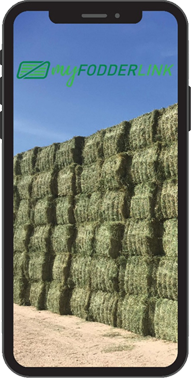What feed testing services do Fodder Link provide?
Fodder Link provide Dairyland CNCPS 6.5 NIR testing for hay, straw, silage, and fresh pasture, with exciting innovations ahead to cater for additional commodities, including but not limited to, grain, by-products, and rations. Fodder Link also provide mould and yeast counts and nitrate testing at competitive prices.
What is the expected time frame for NIR tests?
The expected time frame for NIR tests is 1 business day upon receival of the sample if payment is received.
What is the expected time frame for mould and yeast?
The expected time frame for mould and yeast tests is 10 business days upon receival of the sample.
How do I collect my sample?
Fodder Link have provided instructions for collecting fresh pasture/crops, silage and hay/straw in our ‘Help and Resources’ tab. You can also download all PDF’s here.
How do I receive my feed test?
You receive your feed test through the nominated email stated on the feed test submission form.
Why have I not received my feed test?
You may not have received your feed test due to a delay in sample delivery to our laboratory, your payment may not have been received, or a technological issue may have occurred with our partnering company. Please note that our clients will be notified if any disruptions regarding the receival of your feed test occur, and our team will do everything in our power to solve the issue as soon as possible.
How do I read my feed test?
Fodder Link have provided feed test terms and definitions that may help you understand the nutrients listed on our feed test results. If you have further questions, please don’t hesitate to contact us or your trusted nutritionist.
Why does my feed test show low results, but the product visually presents well?
There are multiple explanations as to why your feed test may show low results comparative to the ‘look and feel’ of the product. It is now understood that the visual parameters measured for any product may not correlate with similar nutritional quality. Reasons for low results include but are not limited to:
Poor Sampling Technique
- May have taken one sample from a specific bale/area, rather than 20% of the representative batch.
- The sample may have been mixed with product directly from an external surface of the bale or pit that has had prolonged environmental exposure.
Degradation In Postage
- From warm temperatures, plant respired moisture and excess oxygen in the sample bag.
Incorrect labelling of the product
Example: Silage samples need to be taken six to eight weeks from the ensiled date, to ensure complete fermentation has taken place. If a sample has been taken before ensiling but is labelled as ‘silage’ the results will not represent the product in ‘feed out’ form and should have been tested as a fresh crop.
How do I ensure my sample quality is preserved during postage?
Fodder Link have provided instructions for collecting fresh pasture/crops, silage and hay/straw in our ‘Help and Resources’ tab, that also explains the process of protecting sample quality for delivery to the laboratory. You can also download all PDF’s here.
How do I ensure my sample arrives to the postage address safely and does not get lost?
It is essential that you email your completed feed test form to feedtests@fodderlink.com.au to ensure that staff can generate an estimated delivery date, so possible delays or lost parcels can be flagged and followed up with the postage company.


